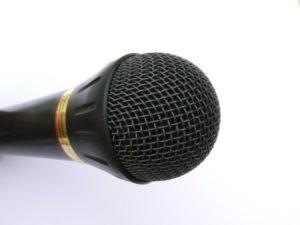 Meeting the Microphone
Meeting the Microphone
All your hard work on your research, new program, client service, volunteer effort…well, you can fill in the blank…has drawn the attention of the local TV station or digital news outlet. And when that reporter calls and wants to do an on camera interview or comes up to you in the corridor during a conference and says she’d like to “ask you just a few questions,” are you a deer in the headlights? Or are you the calm, cool voice who will make the reporter’s—and your crucial audience’s—day by perfectly expressing that message you’ve waited so long to deliver. Here are six pointers to get you the kind of attention you really want, and build or grow a lasting relationship with members of the media.
Manage Your Messages
Long before you are approached by any reporter, you should have a rock-solid understanding of your organization’s objectives and key communications messages and how they relate to your work and accomplishments. Write them down. Review them frequently. And be prepared to access the sound bites which you should already have committed to memory for just such an occasion. (See our blog post on More BITE in Your Communications.)
Prepare
The reporter is always on a tight deadline. Whether it’s 8 in the morning or 9 at night, there’s a news slot that needs to be filled now. Understanding that will also help you understand why the reporter seems a little short with you—or even terse. This does not mean you can not ask for a few moments first. You might have to “make a call” or “clear your schedule” so you can devote full attention to the reporter’s needs. Then you use that time to prepare. Click off in your mind those sound bites that perfectly encapsulate the message you’d like to deliver. If time allows, write down exactly what you want to say. You won’t read it on camera, but you will improve your chances of plucking the right answer from the memory stacks. If you’re alone, you can even indulge in a few deep breathing exercises or tongue twisters to quiet the nerves and limber up some critical communications muscles.
Make Friends with the Cameraman/woman
Radio or other audio-only reporters usually travel alone. But TV and digital reporters may come with a crew of one or more other professionals to capture your words—and your face—for the audience. Pay attention to them and greet them just as you do the reporter. A camera operator (who is accustomed to being treated like a piece of equipment) may just respond to your friendly greeting with a few suggestions for where to stand. They’re more likely to let you know if you have lipstick or spinach on your teeth. And they’re even more likely to capture you in the best frame and light.
Listen to the Reporter
Let’s imagine you have perfect command of the messages you want to deliver. You’ve prepared a few sound bites that are ready to go given the proper prompt. Now, listen to the question. If the reporter asks, “so…tell me what’s going on here,” you could be in the best—or worst—possible shape. Whether the reporter has asked you an entirely open-ended question, or drilled down into details, your best recourse is to offer just a couple of sentences that clearly and succinctly explain—and attend to your key messages. Then stop. Don’t ramble. Let the reporter pose a follow-up question. And don’t offer more than a reporter asks. Above all, listen to the reporter. Nothing looks or sounds worse than a sound bite perfectly delivered, when the reporter has asked about something else entirely.
Never Repeat a Negative Question
A reporter may frame their question in the negative. “As a media trainer, don’t you teach people to lie?” Don’t fall into the trap of repeating the negative frame. We know from research that our brains tend to biased toward the negative. It’s what stays with us. Try to frame you answers in a positive or more neutral way. For example, instead of saying, ”No, we don’t train people to lie,” say “We train spokespeople to tell the truth…” and then continue on with your key messages.
Follow Up
Job one with a media interview is to make sure your message is heard. Job two is to develop a connection with the media. Before the reporter leaves, offer to provide more details in an email. Ask for the reporter’s card so you can follow up with any new developments in your story. And if your field or your position makes it appropriate, offer to be an ongoing source of information for the reporter and his or her news organization. Being the go-to resource for any newsgroup or blogger is an exceptional way to help your enterprise connect with the audiences you need to reach most.

